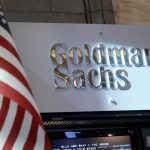Gold futures logged the biggest weekly increase in four months on Friday. The Fed’s announcement of lower interest rates for a “considerable time” and escalating violence in Iraq pushed havens to multi-month highs, while stocks were also at record highs.
Gold futures for delivery in August closed for $1 316.6 per troy ounce on Friday on the COMEX in New York, recording a daily gain of 0.19% and a weekly increase of more than 3%. Weekly high and low stood at, respectively, $1 322.5 per ounce on Friday, which is a two-month peak, and $1 258.0 per troy ounce on Tuesday. Last week the contract gained about 1.5%.
Meanwhile, silver contracts for July closed at $20.949 per troy ounce, adding 1.46% for the session, and logging a weekly gain of more than 6%. Weekly high and low were at, respectively, $20.990 on Friday, which was also a three-month peak, and $19.435 on Tuesday. Last week silver added more than 3%.
“There’s still conviction out there to be long the market,” Adam Klopfenstein, senior market strategist at Archer Financial Services in Chicago, said for Bloomberg. “The major reason was the Fed.”
US economy
The US posted key economic data this week. CPI for May was recorded at 2.1% annual growth and 0.4% month-on-month, while core CPI, which exclude food and energy, added 0.3% on a monthly basis and 2.0% year-on-year. CPI is a leading indicator for consumer spending, which generates about 80% of US GDP, and is the primary gauge used by the Fed for its monetary policy decisions.
US housing data was also released this week. The annualized rate of housing starts dropped 6.5% on a monthly basis in May and stand at 1.001 million, while building permits’ annualized rate declined by 6.4% on a monthly basis to 0.991 million. The real estate sector accounts for about 13% of US GDP.
Initial applications for unemployment benefits for the week ended June 14 were logged at 312 000, beating expectations and improving on the 317 000 for the previous week. Meanwhile, continuing claims for the week through June 7 were also better than expected at 2.561 million, which is the lowest reading since October 2007.
“The trend in initial claims is good,” Ryan Sweet, senior economist at Moody’s Analytics Inc. in West Chester, Pennsylvania, said for Bloomberg before the report. “The job market continues to heal.”
FOMC meeting
The US Federal Open Market Committee (FOMC) announced key monetary policy decisions this week, after concluding its 2-day meeting on Wednesday. Interest rate was kept at 0.25%, while monthly assets purchases were trimmed by $10bn for the fifth straight time. Fed’s Chair Janet Yellen expressed the Committee’s views that rates are likely to stay low “for a considerable time”. Yellen emphasized on labor market weaknesses and “noisy data”, referring to improving CPI readings.
“All the evidence is that this is the weakest economic recovery on record, so she is going to tilt the committee in the direction of providing as much aid as possible for as long as it takes,” Chris Rupkey, chief financial economist at Bank of Tokyo-Mitsubishi UFJ Ltd. in New York, said for Bloomberg.
FOMC’s decisions have a significant impact on financial markets, as rates dictate short-term dollar valuation trends. Also, the US stimulus program, which buys assets worth tens of billions of dollars each month, has been a sizable support to the economy, and a cutback would mean less “easy” business. However, the cutbacks are implemented only as the economy recovers well enough.
Stocks, dollar
US stocks added on the Fed’s commitment to supporting the economy, reaching new peaks. S&P 500 added about 1.3% this week and closed for the record-high of 1962.87. Dow 30 also logged the highest close of all time on Friday at 16 947.08, after a 1% weekly gain, while Nasdaq 100 added 0.7% this week to reach a closing all-time high of 3804.61 on Wednesday. Dow Jones Euro Stoxx 50 closed the week about 0.5% higher.
Meanwhile, assets at the SPDR Gold Trust – the largest gold-backed exchange-traded fund, were unchanged on Friday at 782.62 tons, having dropped more than 4 tons this week. The fund is orbiting multi-year lows, amid a recovering US economy.
The US Dollar Index, which measure the greenback’s performance against six other major currencies, was pressured by the Fed’s firm tone on keeping rates lower for as long as necessary. The gauge dropped about 0.3% this week, and was at 80.44 as Fridays session closed.
Meanwhile, the euro, the dollar’s main competitor, has gained more than 0.5% against the dollar this week, closing at 1.3600 EUR/USD.
Iraq
Sunni militants, led by a group of extremists called ISIS (Islamic State in Iraq and the Levant), continued fighting security forces in many towns in the northern and western provinces of the country. Fighting was also reported at Iraq’s largest oil refinery at Baiji, which supplies 40% of Iraqi domestic fuel demand. Some 30 000 people, who work at the refinery had been evacuated earlier.
“The south of the country is not beyond the geographic reach of extremist groups seeking to undermine the government,” analysts at Barclays said in a note, cited by Bloomberg. “We believe that any significant uptick in unrest in the south, even if oil facilities were spared, would likely accelerate the exodus of foreign oil workers out the country.”
Authorities assured that the military were in control of the refinery, and that the militants were being pushed back. The government also insisted insurgents do not threaten Baghdad, nor the southern oilfields, which account for 90% of Iraqi oil output.
Iraq is OPEC’s second-top oil producer, and exports some 3 million barrels per day from its main southern terminal at Basra.
Next week
Early on Monday, the Eurozone will report preliminary PMIs for June. Both services and manufacturing in France are expected to contract, with readings just below the 50 mark. Germany is set for more expansive factory sector and slightly slower growing services sectors. The Bloc as a whole will be somewhere inbetween the two, with analysts forecasts of standings at 52.2 for factories and 53.3 for services. About 70% of EU GDP is from services, with industries adding about 27%.
The US will post more housing data next week, with both existing home sales and new home sales for May probably logging steady growth.
Consumer confidence in the Eurozone and in the US will be measured. The German Ifo institute will probably reveal steady sentiment for the EU for July, with expectations for a standing of 110.2, after 110.4 in June. Meanwhile, the Conference Board is set to unveil growing confidence in the US for July, with a forecast reading of 83.5, after 83.0 in June.
Later in the week, the US will post durable goods orders for May, with forecasts of more steady growth. More data on personal income and spending in the US, and Markit’s PMI readings are due, and will probably stand for robust improvement.





